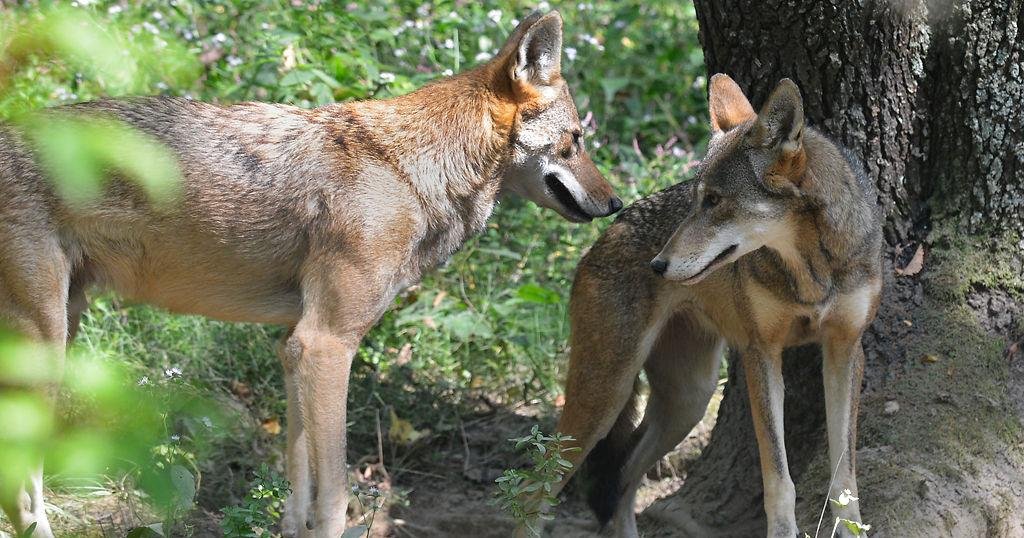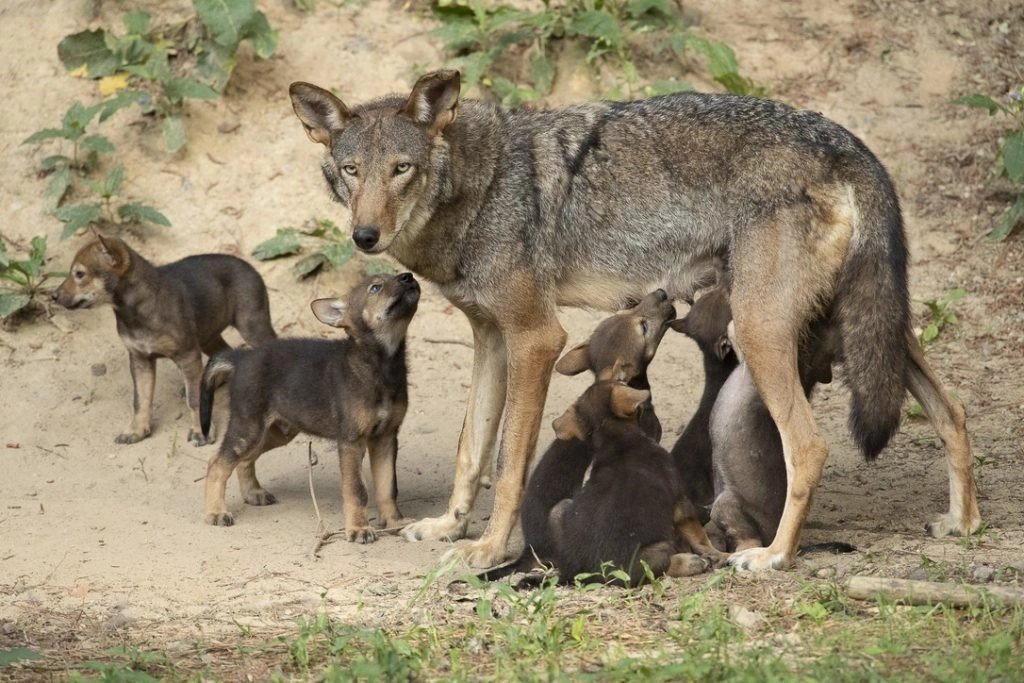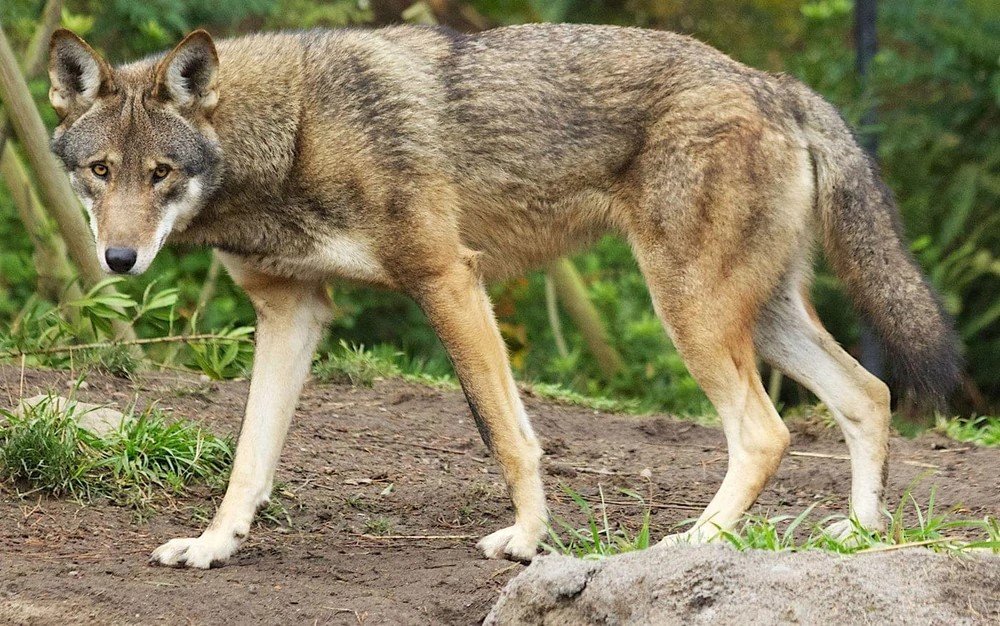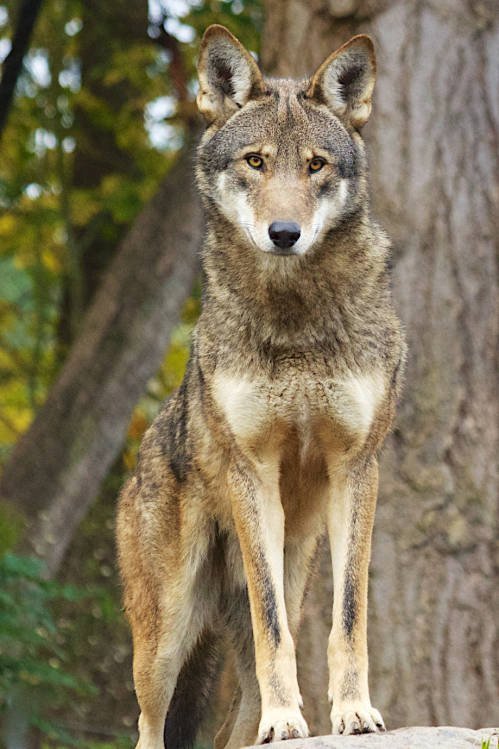
USA
Common Name: American Burying Beetle
Scientific Name: Nicrophorus americanus
Image: © South Dakota Game, Fish and Parks

Fact
The American burying beetle can sniff out a freshly dead animal from up to two miles away.
About
Image: © Ray Meibaum / Saint Louis Zoo
Overview:
The American burying beetle is a highly efficient recycler. It can feed at the same time as sheltering its young, whilst simultaneously returning essential nutrients to the earth, nourishing vegetation and keeping ant and fly populations in check. They are the largest carrion beetle growing up to 4cm (1.5inches) in length.
Lifespan:
They typically live for 1 year. Newly emerged adults remain in the soil during the winter and mate in the summer. Adults then die after raising their offspring. This behaviour is not typically observed among invertebrates outside of social bees, wasps, and termites. The offspring are raised in decaying carcasses which are buried by their parents.
When to spot:
These beetles are highly social animals who are mostly active at night when temperatures exceed 15˚C.
Where to spot:
American bury beetles use range throughout the United States and Canada, however, they are now extinct in Canada and their range is largely confined to the east and west coasts of the United States and Alaska. They are only found in 4 states in the United States: Rhode Island, Oklahoma, Arkansas, and Nebraska. The specific preferred habitat for the American burying beetle is currently unknown. However, like many other endangered species, they are largely confined to areas with the least human influence. They have been found to thrive in areas with an abundance of carrion in grasslands, forest edges and scrublands.
Diet:
The beetles eat carrion, as well as the larvae and eggs of flies.
Predators:
There are no known predators of the American burying beetle.

Fact
American burying beetles lay eggs on carcasses from 50-200 grams in size. After laying their eggs they cooperate to bury the carcass under several inches of soil.
How To Identify
Most Nicophorus carrion beetles, including the American burying beetles, have shiny black wings which are distinctively marked with bright orange bands. American burying beetles also have a pronotum, a shield-like area behind the head that acts as a shovel. They also have a patch of orange on their face between the eyes. In males this is square and in females it’s triangular
Image: © iNaturalist UK
Vulnerability Status
IUCN Red List status: Critically Endangered
Country status: Threatened
Population size: Approximately 3,000 adults
As oil and gas development in the USA thrives the American burying beetles are spiralling towards extinction. Their habitats are being destroyed and the burning of fossil fuels are making our planet too hot for the species to survive. During 2020, the Trump administration downlisted the American burying beetle to allow the oil and gas industry to grow despite acknowledging that the beetle has not met requirements for downlisting since the 1991 recovery plan. The recovery plan calls for three populations of at least 500 individuals in four regions.
Threats
Key threats to species:
The threats to the American burying beetle are not well understood. However, ongoing development of the oil and gas industry has led to increased habitat destruction and burning of fossil fuels. This has in turn led many species, including the American burying beetle, to decline.
Fragmentation and habitat loss has led to the reduction of carcasses which are essential for the American burying beetles food and reproduction. Fragmentation of habitats has also increased the amount of edge habitat which is favoured by other vertebrate predators such as opossums, crows and foxes which out-compete the beetles for carcasses.
Other recent extinctions, such as that of the passenger pigeon, may also be having a detrimental effect on the American burying beetle population as they have lost a prominent food source.
Research on related beetle species implies that the abundance of invasive fire ants may also threaten the reintroduction attempts of the American burying beetle.
Importance of the species:
As scavengers, all carrion beetles play a vital role in the recycling of decaying materials. Without effective populations of carrion-eaters carcasses may not be effectively broken down. American burying beetles return important nutrients from their food to the soil, maintaining soil health and supporting plant growth. Soil health is also vital in the fight against climate change as healthy soil has the ability to sequester a large amount of carbon from the atmosphere.
American burying beetles also have a symbiotic relationship with mites (Poecilochirus). The beetle provides the mite with access to food and easy dispersal, while the mites clean the beetle of microbes and fly eggs which are passed to the beetle from their carrion prey. Without the American burying beetle mite populations would decline.

Fact
American burying beetles carry large numbers of mites on their bodies which help keep the beetles and their meals free of microbes and fly eggs.
Conservation Actions
The American burying beetle began to bounce back from near-extinction when it was protected under the Endangered Species Act, 1973. It grew from just one known population in 1989 to six native and introduced populations. Alongside the monitoring of the beetle and protecting its habitat many charities are focusing more on other rare species, such as prairie dogs, whose carcasses are prime American burying beetle food.
There are many initiatives and grants for the conservation of the American burying beetle. SUNY Cobleskill’s Wildlife Management Program was awarded $140,026 from the US Fish and Wildlife Service’s Recovery Challenge Grant to reintroduce the American burying beetle in New York state. The program also surveys the endangered beetle to monitor their efforts over the last several years.
The US Fish and Wildlife Service, the Saint Louis Zoo, the Missouri Department of Conservation and The Nature Conservancy worked together in 2012 to reintroduce zoo-bred American burying beetles into Missouri for the first time. Alongside this in 2016 a census of beetles in southwest Missouri was completed finding 850 American burying beetles in the traps.
What You Can Do To Help
Many educational opportunities at zoos have recently focused on conservation programs. You can get involved with a zoo scientist by collecting valuable data on many animals including the American burying beetle.
The American burying beetle is threatened by the fossil fuel industry through increased pollution and climate change effect and deforestation. Check out our Deforestation and Air Quality pages to see what you can do to help.
Further Information
Click the title below for further information.
-
The Saint Louis Zoo is committed to working with conservation organizations to assist with declining populations of native flora and fauna. The Centre has successfully bred thousands of American burying beetles at the Saint Louis Zoo. Working with U.S. Fish & Wildlife Service, the Missouri Department of Conservation, and The Nature Conservancy, the Zoo is reintroducing captive beetles to southwest Missouri.
Common Name: Red Wolf
Scientific Name: Canis rufus
Photo: © Columbia Missourian

Fact
Whilst red wolves have been declared to be taxonomically unique (they are their own species, rather than a subspecies of grey wolf) they are believed to have been originally produced by interbreeding between coyotes and grey wolves.
About
Image: © Weiler Woods for Wildlife Inc
Overview:
The most endangered canid species in the world, the red wolf is one of two species of wolves in North America, the other being the grey wolf (Canis lupus). Driven to extinction in the 20th century, the species has been the subject of various reintroduction programmes and conservation efforts of mixed success.
Lifespan:
Red wolves typically live six to seven years in the wild and up to 15 years in captivity.
Habitat:
Red wolves are native to the south-eastern United States. In the past, its habitat extended from Texas to Florida and the Midwest, even as far up as central Pennsylvania. The wide range suggests a variety of habitats from bottom-land river forests and swamps to farmland and coastal prairies, showing they can thrive in many places given adequate prey and little persecution by humans. North Carolina is currently the last place where wild red wolves are found.
When to spot:
With such low numbers in the wild, a red wolf encounter is extremely rare. However there are numerous captive populations at wildlife centres across the US taking part in the Red Wolf Survival Programme.
Diet:
Red wolves, like other canid species, are ultimately omnivores, but their diet focuses mainly on their carnivorous needs. They hunt white-tailed deer, raccoons, and other smaller mammals such as rabbits, mice, nutria, and other rodents. They eat between two to five pounds of food a day and can travel up to 20 miles or more a day to find food. During the winter it is easiest for them to find food due to the lack of concealing vegetation for their prey and the obvious tracks their prey leave in the snow. Whereas summer is the most difficult time of the year with concealing vegetation, more frequent movement of prey and needing more energy to spend in the heat to find sources of food.
Predators:
Grey wolves and coyotes can battle with red wolves over territory.

Fact
Red wolves mate for life and usually mate once a year in February with pups being born in April or May
How To Identify
Adult red wolves typically grow up to 26 inches (66cm) tall and between 4-5 feet long (1.2-1.5 metres), making them intermediate in size between coyotes and the grey wolf. The colouration of their coats can vary but generally consists of a mixture of brown, tan, grey and black. They often also have characteristic reddish sections of fur behind their ears and on their necks and legs.
Red wolves typically weigh between 45 and 80 pounds (20-36kg) and have pointy ears, wide heads and long, slender legs. Their similarities with coyotes often lead to the two species being confused. However, red wolves are significantly larger and have a shorter, wider muzzle and slightly more rounded eyes.
Vulnerability Status
IUCN Red List status: Critically endangered
Country status: Endangered under the USA’s species act
Population size: 15-17 in the wild
Previously wide-ranging across North America, the red wolf was driven to near extinction by the mid-1900s by aggressive predator-control programmes and habitat destruction. By the late 1960s only a small population remained in southern USA and fourteen of these survivors were selected for a captive breeding population. The species was declared extinct in the wild in 1980. Various reintroductions across the USA led to populations to increase to over 100 in 2012, but due to a lack of enforcement by US Fish and Wildlife service, populations declined to 40 in 2018 and around 14 in 2019.
Threats
Key threats to species:
There are a number of threats to the red wolf with a mixture of natural and human-driven challenges restricting the growth of wild populations:
Hybridisation with coyotes: Due to the relatively small wild population of red wolves, one of the principal threats is the risk of them breeding with coyotes. This can result in negative impacts on the gene pool within red wolf populations and could lead to wild red wolves being unrecognisable from the existing species within several generations.
Vehicle collisions: There are a number of roads in the areas where wild red wolf populations have been established and this can lead to the risk of them being hit by vehicles. This accounts for a large number of red wolf mortalities despite efforts to reduce collisions through the introduction of signs and warnings.
Gunshots and traps: Due to their similarities in appearance, red wolves may occasionally be mistaken for coyotes and shot. There have also been intentional shootings of red wolves, despite this being illegal in the USA. Traps set for other animals can also result in the accidental trapping of red wolves.
Importance of the species:
Restoring red wolves means restoring important functions to the ecosystem such as the predator-related roles enhancing diversity, balance and stability.
They can help control some “nuisance species” such as deer, rabbits and rodents which can cause crop damage or over predation of, for example, bird eggs.
Restoring red wolf populations could also have important non-biological effects, such as economic value through tourism or public support and social value as a powerful education tool for engaging people in understanding the value of wildlife and conservation.

Fact
Two of the three subspecies of red wolf are now extinct: The black wolf and the Mississippi Valley wolf.
Conservation Actions
Captive breeding programme: In the 1970s, due to continued declines in wild red wolf populations the US Fish & Wildlife Service and the Association of Zoos & Aquariums began capturing wolves for a captive breeding programme. This programme still continues today with approximately 241 red wolves held in captivity across 45 Species Survival Plan (SSP) locations.
Release into the wild in North Carolina: In 1980, the red wolf was declared extinct in the wild. However, following the success of the captive breeding programme, four pairs were released into the Alligator River Refuge in North Carolina in 1987. Further reintroductions resulted in increasing populations with groups of wolves maintaining territories, forming packs and breeding in the wild.
The peak and decline in wild populations: Wild populations of red wolves peaked in 2012 with approximately 120 individuals in the wild. The recovery programme was believed to have been a success with several innovative management strategies attempted such as coyote sterilisation to prevent hybridisation. However, wild populations have subsequently declined to approximately 15-17 individuals in 2021 with gunshots a leading cause of mortality. There is hope that this population can once again be increased through the release of captive animals and management techniques such as pup fostering.
Image: © USFWS/Point Defiance Zoo & Aquarium
Further Information
Click the title below for further information.
-
Red Wolf Review seeks to educate the public about the nature of red wolves and the situation involving red wolf recovery. The activities of Red Wolf Review, including website updates, public outreach, and educational activities that are contributed to by a team of collaborating individuals from various important animal and wolf organisations.
-
Founded in 1997, the Red Wolf Coalition (RWC) serves as the hub of private support for long-term red wolf restoration. Through a variety of programs, the RWC provides the public with science-based information about the biology and ecology of this endangered predator.
-
The National Wolfwatcher Coalition educate the public, advocate for science-based decision making at every level of government and participate in activities that promote citizens’ awareness and participation in the decision-making process about wolves.








